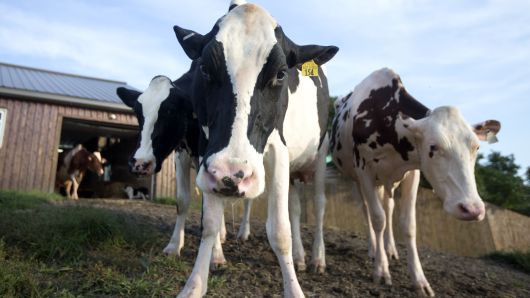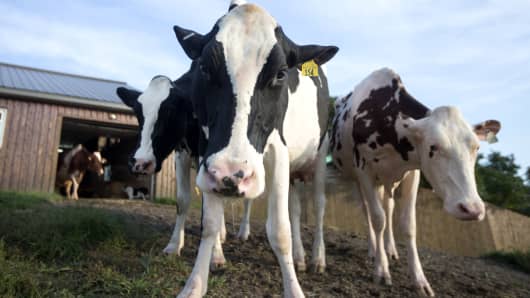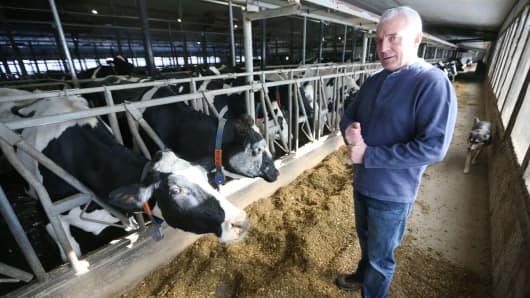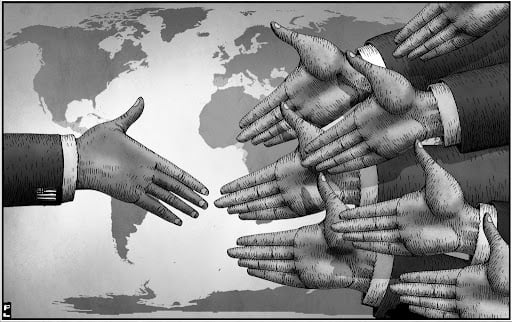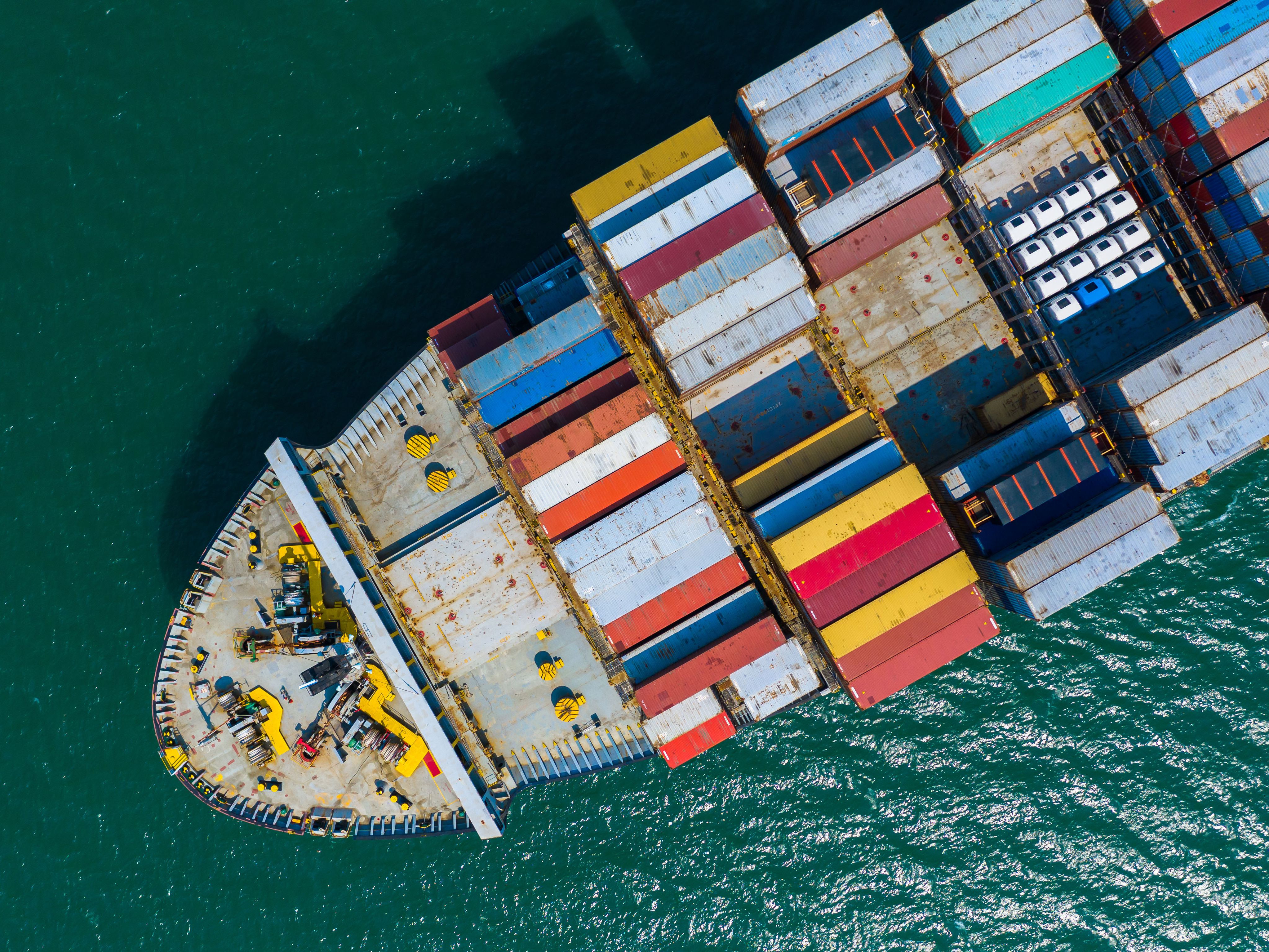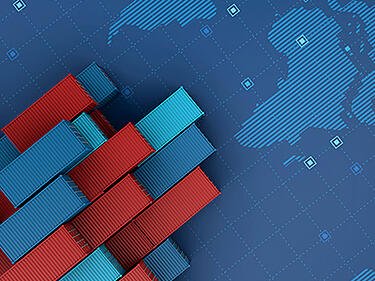Canadian dairy farmers are fuming over the renegotiated trade deal with the U.S. due to concessions Ottawa made that could lead to hundreds of millions in lost revenue for producers.
The new trade deal, to be called United States-Mexico-Canada Agreement, grants the U.S. an expanded 3.6 percent access to Canada’s dairy market and gets rid of a controversial domestic milk pricing class Ottawa had previously defended. President Donald Trump has been critical of Canada’s protectionist dairy policies, blasting them as “not fair to our farmers” and harmful to milk producers in Wisconsin and other border states.
“The announced concessions on dairy in the new USMCA deal demonstrates once again that the Canadian government is willing to sacrifice our domestic dairy production when it comes time to make a deal,” said Pierre Lampron, president of Dairy Farmers of Canada, a trade group representing producers. “The government has said repeatedly that it values a strong and vibrant dairy sector — they have once again put that in jeopardy by giving away more concessions.”
Dairy as ‘bargaining chip’
The new trade deal to modernize the North American Free Trade Agreement follows 14 months of talks between Washington and Ottawa officials. The U.S. and Mexico reached a trade deal in late August. Trump had threatened to leave Canada out of a new trade deal and impose car tariffs if Ottawa didn’t reach a deal by a deadline of midnight Sunday.
Lampron, an organic dairy farmer in Mauricie, Quebec, added that the agreement was a sign that Canada’s dairy farmers “are nothing more than a bargaining chip to satisfy President Trump.”
The Canadian dairy trade group said the new trade deal “weakens the dairy sector which, among other things, employs more than 220,000 Canadians and contributes some 20 billion dollars a year to Canada’s gross domestic product. The livelihood of these thousands of Canadians and the future generations of dairy producers is seriously at risk.”
“It’s been a huge disappointment for us as dairy producers, said David Wiens, chair of Dairy Farmers of Manitoba. “With almost 4 percent access being given of the Canadian market … it further undermines our market and our revenue.”
Calls for US boycott
The dairy concessions also led to some calls in social media for a boycott of imported U.S. dairy products.
Some also wondered if they will even know whether the dairy products are made locally or in the U.S. Canadian dairy products are currently labeled with country of origin but sometimes in very small print.
Canada purchased nearly $636 million worth of U.S. dairy products last year, according to the U.S. Dairy Export Council. Mexico was the largest single market for U.S. dairy exports in 2017, representing $1.31 billion in products, particularly cheeses.
Prime Minister Justin Trudeau sounded a cautionary note about the new trade agreement in remarks Monday, saying that the deal “still needs to be ratified in Canada, Mexico and the U.S. But what I can say is, free trade in North America, a trading zone that accounts for more than one-fourth of the world’s economy with just 7 percent of its population, is in a much more stable place than it was yesterday. We now have a path forward.”
Canada uses a supply-management program to support various agricultural sectors, including dairy and cheese, and Trudeau last year said the system “works very well.” Under the system, provincial dairy marketing boards have a role in establishing local prices, and the federal government helps monitor national production and demand and coordinates policies with provincial boards and sets production quotas.
“Dairy is a heavily regulated industry and highly dependent on quotas,” said Joseph Glauber, a senior research fellow at the International Food Policy Research Institute in Washington.
Killing Class 7
The Canadian federal government offered dairy farmers compensation but some producers were skeptical it would be helpful and also suggested they didn’t want a handout from the federal government.
Wiens, the Manitoba dairy farmer, predicted the new trade deal will end up costing dairy producers significant revenue losses.
“We know the loss to the Canadian dairy industry will be at least $240 million … and that’s not even calculating the losses we will have with the ending of the Class 7 [policy],” he said. He said killing Class 7 will “make it impossible for us to export any protein-based dairy products.”
The trade deal doesn’t do away with supply management but will result in Canada expanding access to 3.6 percent of the dairy market to U.S. producers and also eliminate Canada’s Class 7 policy. The Class 7 category of milk prices was designed to compete with cheap supplies from the U.S.
However, some U.S. experts suggested the access under the new agreement still allowed for continued protections of Canada’s dairy market but could lead to more market liberalization later.
“This isn’t like letting the border wall down and just letting dairy product flow across the border,” said Glauber, a former U.S. Department of Agriculture chief economist. “It’s small amounts, but they will certainly give rise to pressures to liberalize those markets over time.”
270 percent tariff
U.S. leaders have said the Class 7 policy was effectively a way of Canada slapping a 270 percent tariff on milk. They also contended it allowed Canada to create excess milk supply domestically and then dump highly subsidized milk products onto world markets.
The Canadian dairy industry created the new Class 7 of milk prices in early 2017 for so-called ultrafiltered milk, which is used to make cheese, yogurt and ice cream.
“The dairy industry [in Canada] was going to be upset regardless of what happens,” said Patrick Leblond, a senior fellow at the Centre for International Governance Innovation in Ontario, Canada. “The only thing that would satisfy them is if the Canadians had made no concession on supply management, that is, if they offered no quotas to the Americans.”
Leblond said the Canadian dairy market quota offered to the Americans is similar to what was offered to nations part of the Trans-Pacific Partnership as well as under another deal with the European Union, the Canada-EU Comprehensive Economic and Trade Agreement.
“When the U.S. pulled out of the TPP, they lost in a way this access and now they’ve gained in a way more,” he said.
Trump pulled the U.S. out of the TPP to fulfill one of his campaign promises, although 11 other countries — including Canada — signed the deal.
The TPP deal gives access to 3.25 percent of Canada’s dairy industry while the new USMCA deal provides the U.S. with about 3.6 percent of total Canadian milk production under a tariff-free quota.
“The Canadian government actually has given [the Americans] less than what I expected that they would give,” said Leblond. “I expected something a bit above 5 percent, and at some point I heard the Americans were asking for 15 percent. So in the end the deal is at 3.6 percent. I see that as a win for Canada.”
[“source-cnbc”]

